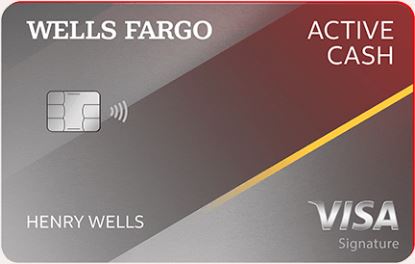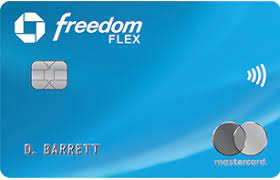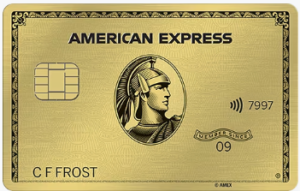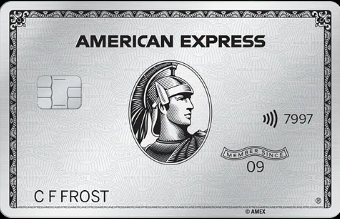Best Credit Cards with Purchase Protection
About Trevor
Trevor Mahoney is a financial services writer and content creator based out of Los Angeles, California. He holds a Bachelors of Science in Finance from Santa Clara University. In his free time, he enjoys hiking and lounging on the beach.
Read full bio
At a Glance
Purchase protection, not to be confused with price protection or extended warranty coverage, allows you to be reimbursed to replace eligible items if they are lost, stolen, or damaged. This can be a huge benefit to ensure your eligible purchases are protected in the event of the unexpected, but there are some limitations and regulations when it comes to what is covered, how much is covered, and when/how to file a claim.
In this article, you’ll learn:
- Best credit cards for purchase protection
- Summary of the credit cards for purchase protection
- What is credit card purchase protection
- What does credit card purchase protection cover
- What is not covered
- How to use credit card purchase protection
- How to know if a card has purchase protection
- How purchase protection benefits differ
- Tips for filing a purchase protection claim
- Methodology
- FAQs
Best credit cards for purchase protection
Wells Fargo Active Cash Card
Reward rate: 2% unlimited cash back
Intro APR: 0% intro APR for 15 months on purchases and balance transfers
Regular APR: 20.24%, 25.24%, or 29.99% depending on credit worthiness
Signup bonus: Up to $200 cash back when you spend $500 in purchases on the card in the first 3 months
Our verdict: The Wells Fargo Active Cash card is a solid choice for individuals seeking straightforward cash back rewards without the hassle of rotating categories or complex redemption options. With a flat cash back rate on all purchases and no annual fee, it’s a practical option for everyday spending. Additionally, the card offers a competitive introductory APR period, making it appealing for those looking to finance purchases or consolidate debt. However, potential applicants should be aware of the foreign transaction fees associated with this card, which may make it less attractive for international travel or purchases.
Pros:
– Flat cash back rate on all purchases
– No annual fee
– Introductory APR offer
– Cell phone protection benefits
Cons:
– Foreign transaction fees apply
– Requires good to excellent credit for approval
Apply now: Wells Fargo Active Cash® Card
Learn more: Wells Fargo Active Cash® Card Review
Chase Sapphire Reserve
Reward rate: 10x points back on hotels and car rentals booked through Chase travel, 3x on all other travel purchases, and 3x on dining purchases
Intro APR: N/A
Regular APR: 22.49%-29.49%
Signup bonus: Earn 60,000 bonus points after you spend $4,000 on purchases on the card in the first 3 months from account opening
Our verdict: The Chase Sapphire Reserve card is a top-tier travel rewards credit card that offers exceptional benefits and perks for frequent travelers. With its generous rewards program, extensive travel benefits, and flexible redemption options, it’s an excellent choice for individuals who prioritize luxury travel experiences and value-added perks. Despite its high annual fee, the card’s benefits often outweigh the costs for those who can maximize its rewards and take advantage of its premium features.
Pros:
– Generous travel rewards program
– Annual travel credit
– Airport lounge access through Priority Pass Select
– Global Entry/TSA PreCheck fee reimbursement
– Complimentary benefits at luxury hotels and resorts through The Luxury Hotel & Resort Collection
Cons:
– High annual fee
– Limited transfer partners compared to some other premium travel credit cards
Apply now: Chase Sapphire Reserve®
Chase Freedom Flex
Reward rate: Earn 5% on quarterly rotating categories, 5% on travel, 3% on dining, 3% on drugstore purchases, and 1% on everything else
Intro APR: 0% intro APR for 15 months on purchases and balance transfers
Regular APR: 20.49%-29.49%
Signup bonus: Earn $200 after you spend $500 on purchases in the first 3 months from account opening.
Our verdict: The Chase Freedom Flex credit card is a standout choice for individuals seeking a flexible and rewarding cash back experience without the burden of an annual fee. With its rotating 5% cash back categories, coupled with additional benefits like a generous welcome bonus and introductory APR offer, this card offers significant value for everyday spending. However, potential applicants should be mindful of foreign transaction fees and the potential need to align their spending with the quarterly bonus categories to maximize rewards.
Pros:
– Rotating 5% cash back categories on up to $1,500 in combined purchases each quarter
– No annual fee
– Generous welcome bonus for new cardmembers
– Introductory APR offer for purchases and balance transfers
– Purchase protection benefits for covered purchases
– Extended warranty coverage
Cons:
– Quarterly bonus categories may not always align with individual spending habits
– Foreign transaction fees apply for purchases made outside the U.S.
Apply now: Chase Freedom Flex
Learn more: Chase Freedom Flex Credit Card Review
American Express Gold Card
Reward rate: Earn 4x membership rewards points are restaurants, 4x membership rewards points at supermarkets, 3x membership rewards points on flights, and 1x membership rewards points on all other purchases.
Intro APR: N/A
Regular APR: 21.24%-29.24%
Signup bonus: Earn 90,000 membership rewards equivalent to $900 when you spend $6,000 in eligible purchases on the card within the first 6 months
Our verdict: The American Express Gold credit card is a premium offering that strikes a balance between earning valuable rewards and providing essential travel and dining benefits. With its focus on earning points on dining and groceries, along with various travel credits and perks, this card is well-suited for individuals who frequently dine out and travel. While the annual fee may seem high, the card’s benefits, including points transfer to airline and hotel partners, often outweigh the cost for those who can take advantage of its features.
Pros:
– Earns rewards on dining and groceries at a high rate
– Travel credits and benefits, including airline fee credit and Uber credits
– Points transfer to various airline and hotel loyalty programs
– Access to Amex Offers for additional savings and perks
– Complimentary benefits such as travel insurance and purchase protection
Cons:
– Annual fee
– Limited travel benefits compared to higher-tier American Express cards
Apply now: American Express® Gold Card
American Express Platinum Card
Reward rate: Earn 5x membership rewards points on flights and hotels booked through Amex travel along with 1x membership rewards points on all other purchases
Intro APR: N/A
Regular APR: 21.24%-29.24%
Signup bonus: Earn 125,000 membership rewards points after you spend $8,000 on purchases on your new card in the first 6 months of card membership
Our verdict: The American Express Platinum credit card stands as a pinnacle of luxury and exclusivity in the world of premium travel cards. With its extensive array of travel benefits, including airport lounge access, hotel status upgrades, and travel credits, it offers unparalleled value to frequent travelers who seek a high-end experience. Despite its hefty annual fee, the card’s rich rewards, exceptional service, and comprehensive travel protections make it a standout choice for those who demand the very best from their credit card.
Pros:
– Extensive travel benefits, including access to Centurion Lounges and Priority Pass lounges
– Hotel status upgrades and benefits through the Fine Hotels & Resorts program
– Uber and airline fee credits
– Global Entry/TSA PreCheck fee reimbursement
– Membership Rewards points that can be transferred to various airline and hotel loyalty programs
Cons:
– High annual fee
– Limited acceptance outside the U.S.
– Some benefits may require activation or enrollment, adding complexity to card management
Apply now: American Express Platinum Card
Capital One Venture X Rewards Card
Reward rate: Earn 10x miles on hotels and rental cars booked through Capital One, 5x miles on flights booked through Capital One, and 2x miles on all other purchases
Intro APR: N/A
Regular APR: 19.99%-29.99%
Signup bonus: Earn 75,000 miles once you spend $4,000 on purchases within the first 3 months of account opening.
Our verdict: The Capital One Venture X Rewards credit card is a premium travel card that offers substantial rewards and benefits for frequent travelers and those seeking flexibility in their redemption options. With its high rewards rate on all purchases, annual travel credit, and transfer partners, it provides excellent value for individuals who prioritize travel and want to earn rewards on their everyday spending. However, potential applicants should consider the card’s high annual fee and the availability of transfer partners before applying.
Pros:
– High rewards rate on all purchases
– Annual travel credit to offset the annual fee
– Transfer partners for added flexibility in redeeming rewards
– Global Entry/TSA PreCheck fee reimbursement
– Complimentary travel insurance protections
Cons:
– High annual fee
– Fewer transfer partners compared to some other premium travel cards
– Some benefits may have limited utility for certain cardholders
Apply now: Capital One Venture X Rewards Credit Card
Summary of the credit cards for purchase protection
| Credit Card | Rewards Rate | Welcome Offer | Annual Fee | APR | Credit Needed |
|---|---|---|---|---|---|
| Wells Fargo Active Cash | 2% unlimited cash back | Up to $200 cash back when you spend $500 in purchases on the card in the first 3 months | $0 | 20.24%, 25.24%, or 29.99% | Good |
| Chase Sapphire Reserve | 10x points back on hotels and car rentals booked through Chase travel, 3x on all other travel purchases, and 3x on dining purchases | Earn 60,000 bonus points after you spend $4,000 on purchases on the card in the first 3 months from account opening | $550 | 22.49%-29.49% | Excellent |
| Chase Freedom Flex | Earn 5% on quarterly rotating categories, 5% on travel, 3% on dining, 3% on drugstore purchases, and 1% on everything else | Earn $200 after you spend $500 on purchases in the first 3 months from account opening. | $0 | 20.49%-29.49% | Good |
| American Express Gold Card | Earn 4x membership rewards points are restaurants, 4x membership rewards points at supermarkets, 3x membership rewards points on flights, and 1x membership rewards points on all other purchases. | Earn 90,000 membership rewards equivalent to $900 when you spend $6,000 in eligible purchases on the card within the first 6 months | $250 | 21.24%-29.24% | Good to Excellent |
| American Express Platinum Card | Earn 5x membership rewards points on flights and hotels booked through Amex travel along with 1x membership rewards points on all other purchases | Earn 125,000 membership rewards points after you spend $8,000 on purchases on your new card in the first 6 months of card membership | $695 | 21.24%-29.24% | Excellent |
| Capital One Venture X Rewards | Earn 10x miles on hotels and rental cars booked through Capital One, 5x miles on flights booked through Capital One, and 2x miles on all other purchases | Earn 75,000 miles once you spend $4,000 on purchases within the first 3 months of account opening. | $395 | 19.99%-29.99% | Good to Excellent |
What is credit card purchase protection and how does it work?
Suppose you have purchase protection, which is offered by some credit cards. In that case, you will be reimbursed to replace eligible items you’ve purchased if they are lost, stolen, or accidentally damaged within a certain period (typically 60 to 120 days).
Terms and limits may vary depending on the car and its issuer; for example, you may be limited to a certain dollar amount per claim with a yearly or lifetime limit. The amount you’re eligible to receive may also vary, ranging from the lesser of the cost to repair the item, the cost to replace it, or a complete reimbursement.
Purchase protection is often offered as secondary coverage, meaning it kicks in after another eligible insurance – like renters or homeowners insurance – or manufacturer/vendor guarantees are used.
What does credit card purchase protection cover?
Some items that your credit card purchase protection may cover include:
- Electronics
- Personal care items
- Home and garden products
- Clothing
What is not covered by credit card purchase protection?
Purchase protection policies are pretty explicit about what they will not cover. For example, perishable items, one-of-a-kind/antique/previously owned items, motorized vehicles, tickets, gift cards, some services, and other items are typically not covered.
There are also exclusions for what caused you to lose the item or its damage, including:
- Fraud, abuse, or illegal activity by the cardholder
- Carelessness in safeguarding the item
- Theft from baggage not carried by hand
- Acts of war
Reading your card’s terms carefully can help you better understand what is and isn’t covered.
How to use credit card purchase protection?
If you qualify for your credit card’s purchase protection benefit, you’ll typically need to file a claim within a certain period after the date of loss. You’ll also need to provide proof of the failure, which can include:
- Insurance declaration forms from other insurance policies that may cover the loss
- A photograph or repair estimate by an authorized repair facility
- A police report (if the item was stolen or vandalized)
- The original itemized receipt
- The billing statement that includes the purchase on your card
In some cases, you may be asked to send the damaged item itself.
Once you’ve filed the claim and provided all supporting documents and evidence, the benefits administrator will provide payment based on the terms of the agreement.
Remember, it’s important to start the claims process as soon as you realize an item is lost, damaged, stolen, defective, or may otherwise qualify for purchase protection. The sooner you get the claim submitted, the more likely you’ll meet filing deadlines and be reimbursed.
How do I know if my card has purchase protection?
You can check if your card has purchase protection in the terms or guide to your card’s benefits. There, you’ll find:
- What is and isn’t covered by purchase protection
- Dollar value limits of coverage per claim per account
- The process for filing, including deadlines
- Other limitations
You may be able to find this online or in the issuer’s mobile app. Or, contact your credit card issuer directly by calling the customer service number on the back of the card. Ask about your card’s benefits and where you may be able to get a copy.
How purchase protection benefits differ
Purchase protection benefits can vary significantly among different credit cards, impacting the level of coverage and the types of purchases eligible for protection. Understanding these differences is crucial for cardholders to maximize the benefits offered by their credit cards. Factors such as coverage limits, eligible items, claim filing processes, and exclusions can vary, making it essential to compare and contrast purchase protection benefits when choosing a credit card or making purchases. In this article, we’ll explore the key ways in which purchase protection benefits differ among credit cards, helping consumers make informed decisions to safeguard their purchases.
Tips for filing a purchase protection claim
When filing a purchase protection claim with your credit card issuer, follow these essential tips:
- Review terms: Understand coverage limits and exclusions.
- Document purchases: Keep receipts and proof of payment.
- Act promptly: File claims within the specified timeframe.
- Contact issuer: Initiate the claims process promptly.
- Provide thorough documentation: Include all required information.
- Follow up: Stay proactive and track communications.
- Be patient: Allow time for the issuer to process your claim efficiently.
Methodology
When evaluating credit cards for their purchase protection features, our methodology encompasses a comprehensive review of several key factors to ensure consumers receive accurate and useful information:
- Coverage limits: Maximum reimbursement amount for covered purchases.
- Deductibles: Out-of-pocket costs before coverage applies.
- Scope of coverage: Types of purchases covered and under what circumstances.
- Claim process: Ease and efficiency of filing claims.
- Customer reviews: Cardholder experiences with the claim process and issuer responsiveness.
- Additional benefits: Additional features like extended warranties or return protection that enhance value.
FAQs
Depending on the credit card, you may have access to several other protections and perks such as price protection, extended warranty coverage, return protection, cell phone protection, travel and rental car insurance, trip cancelation or interruption insurance, trip delay insurance, baggage delay or lost luggage insurance or reimbursement, emergency travel assistance, and more.
No, not all Mastercard credit cards have purchase protection.
In some cases, your credit card may offer a variety of protections from reimbursing lost or stolen purchases made from the card to trip cancellation insurance, emergency roadside assistance, and more, to fraud alerts and identity monitoring services.
For most credit cards, you must have made the eligible purchase within 90 days of it being lost, damaged, or stolen. You must also typically file the claim within a certain period, such as 120 days, from the damage/loss.
No, generally you don’t need to register your purchased items to be covered by purchase protection offered by credit cards. Purchase protection typically applies automatically to eligible purchases made with the card. However, it’s essential to review the terms and conditions of your credit card’s purchase protection policy as specific requirements or limitations may vary depending on the card issuer. Some credit cards may require you to keep receipts or provide documentation in the event of a claim, but registration of purchased items is typically not necessary for coverage.















